Olmos Park Living Magazine
As Ted Flato recounts to me how he and David Lake launched their San Antonio architecture firm after the death of their mentor, the famed Texas modernist O'Neil Ford, Flato's Zoom connection abruptly cuts out. Was Ford, who passed away in 1982, haunting our interview? Perhaps, but what's certain is that the spirit of the late trailblazer, who believed that a building should exist in harmony with its environment, has informed Lake Flato since its inception in 1984. Ford "was a great counterpoint in those days to what was going on in the architecture schools, [where] it was all about shape and history and cleverness and Sheetrock," Flato says, laughing, as we resume our video call.
Lake Flato, one of the preeminent sustainable-architecture outfits in the country, is known for high-profile projects including the Austin Central Library and the Pearl Brewery redevelopment as well as for residences, from ranch homes to city-dweller digs, that thoughtfully connect with their surroundings. With project descriptions by veteran Texas design writer and former Texas Monthly staff writer and editor Helen Thompson, Lake Flato Houses: Respecting the Land (Rizzoli New York, October 19) unpacks how the pair's ethos—that architecture ought to be firmly rooted in place, using local resources—has been a constant in their careers.
The photos showcase a stunning array of abodes in Texas and across the country, including the Verde Creek House, in Center Point, near Kerrville. A clear example of how Lake Flato embeds its structures in the landscape, the home seems to magically arise where its eponymous creek bends, its cypress walls blending with the thicket of cypress trees deep in the Hill Country.
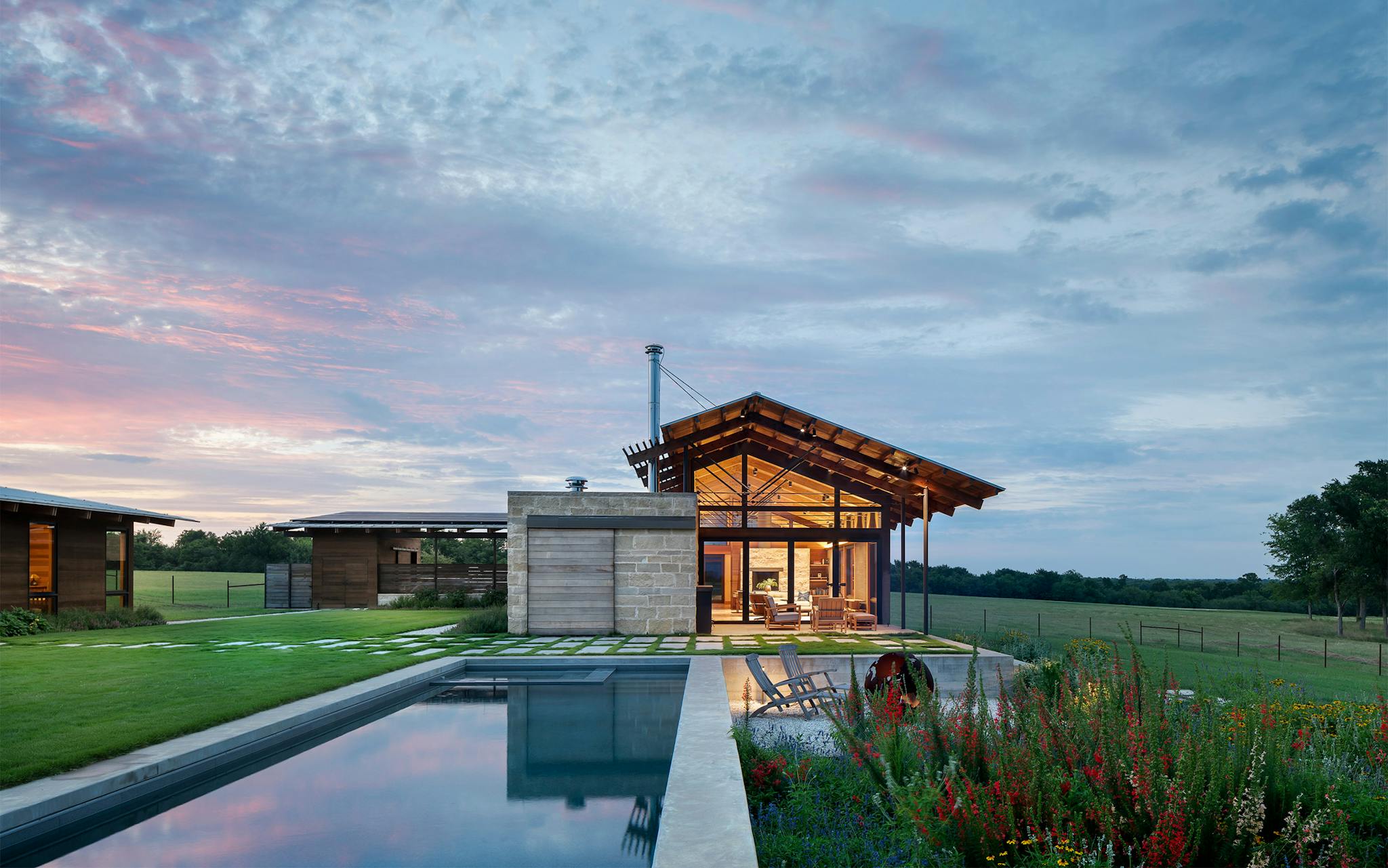
This Washington County ranch, which Lake Flato designed for two geologists seeking a slower-paced lifestyle, features a living room that bleeds into the outdoors; massive bifold doors can swing open to overlook a charming courtyard and the exuberant landscape.
Andrew Pogue
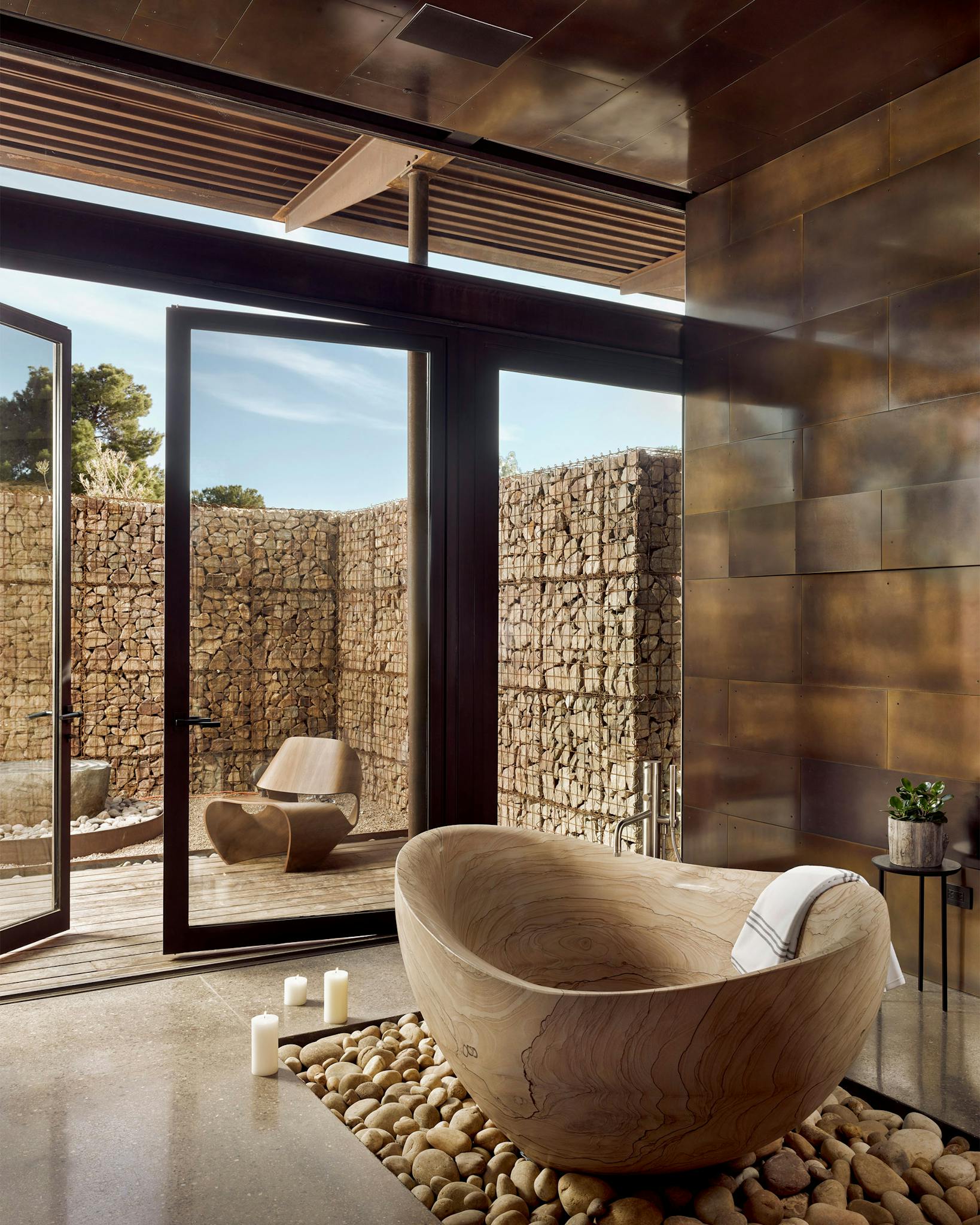
The Franklin Mountains encircle El Paso's Courtyard House, where a sunken courtyard stretching for seven thousand square feet conceptually ties the property together while performing the more practical function of retaining stormwater when it pours.
Casey Dunn

Crafted in the aesthetic and spirit of a summer campground, the Aegean Pool House, in Mineola, uses pine for its exterior siding, as well as inside the home, in communion with the pine forest surrounding it.
Casey Dunn
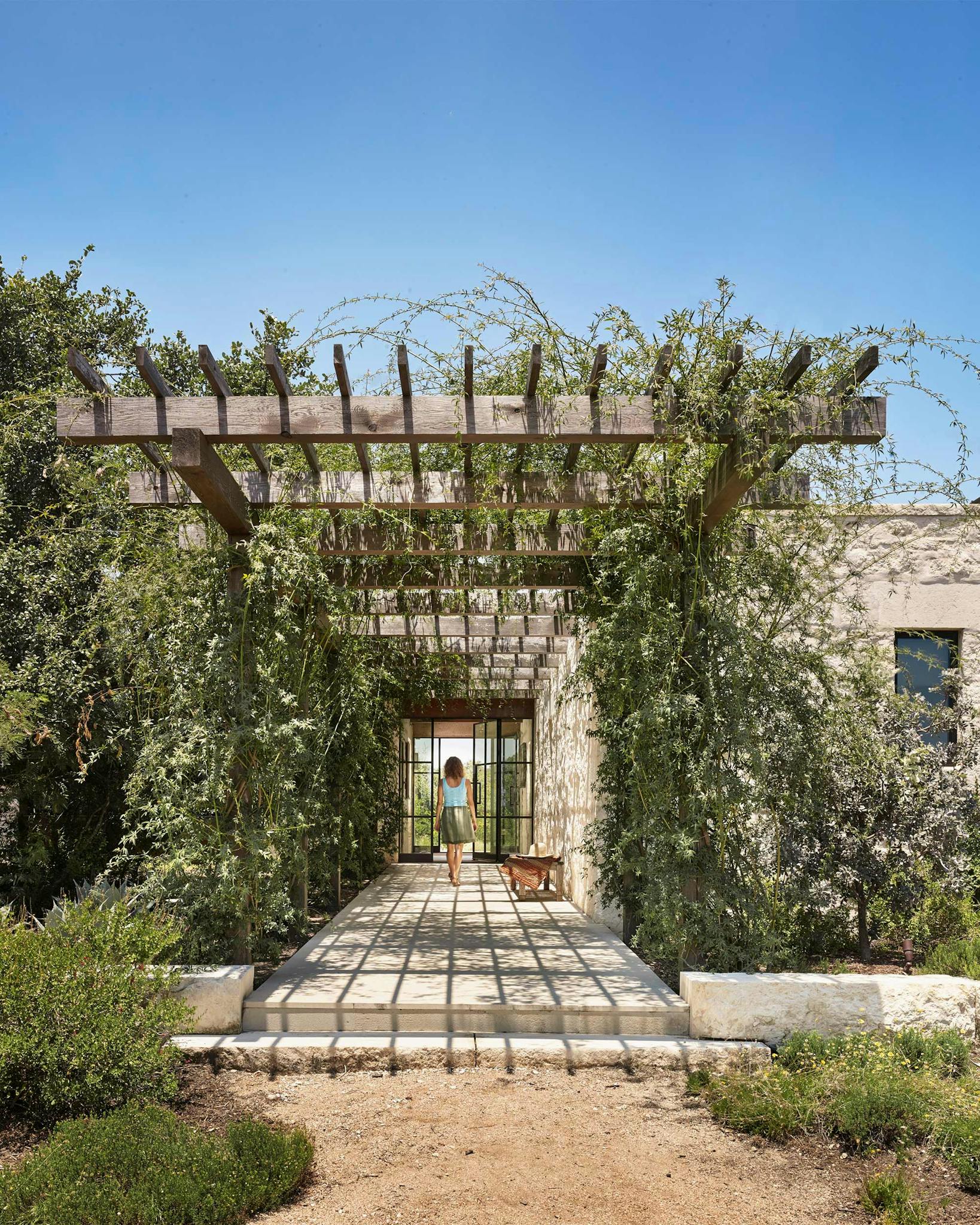
At the Goat Mountain House in Uvalde, an eight-foot-wide arbor laden with white Lady Banks climbing roses hovers above a breezeway peering at the home's namesake mountain. As the book puts it: "The house's intention is to make its homeowners feel as if they are outside even when they aren't."
Casey Dunn
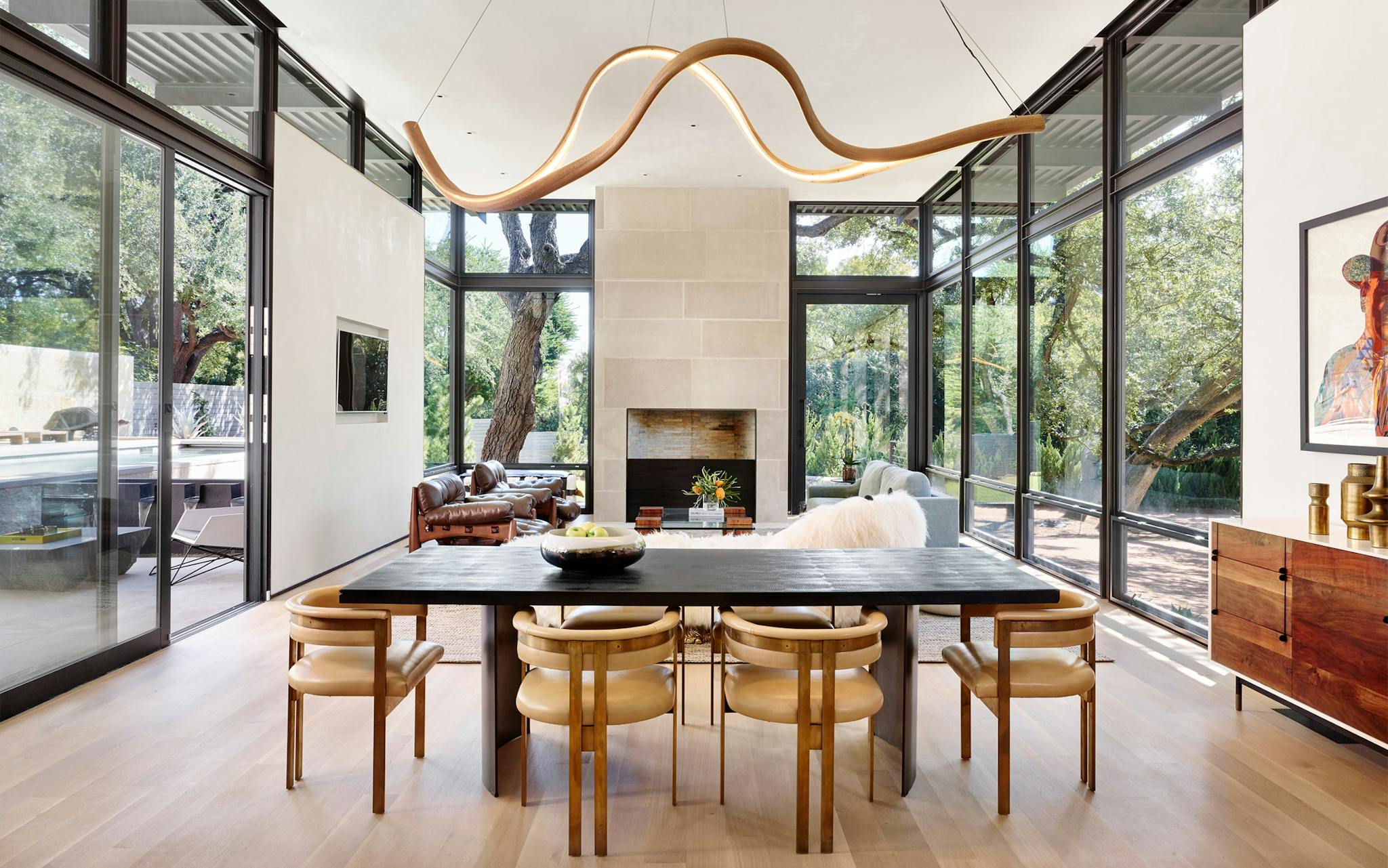
If it appears as if the Olmos Park House's living room is levitating among nearby oak trees, that's because the illusion is intentional: the room in the modernist San Antonio abode was purposefully cut into a slope at one end to give the effect of the outside becoming indistinguishable from the inside.
Casey Dunn

Tucked into a grove of oak trees, with a boathouse sitting right along the lip of Canyon Lake, PaaHaa Ranch was originally constructed as a homestead in 1875, where it once included the likes of a smokehouse.
Casey Dunn

"The Davis Mountains in West Texas are a sky island," the book's authors write; fittingly, the porch of the Prow home in Fort Davis skirts the entire length of the building, so that guests can marvel at the canyon before them—as though they're, yes, viewing it from a ship's prow.
Casey Dunn
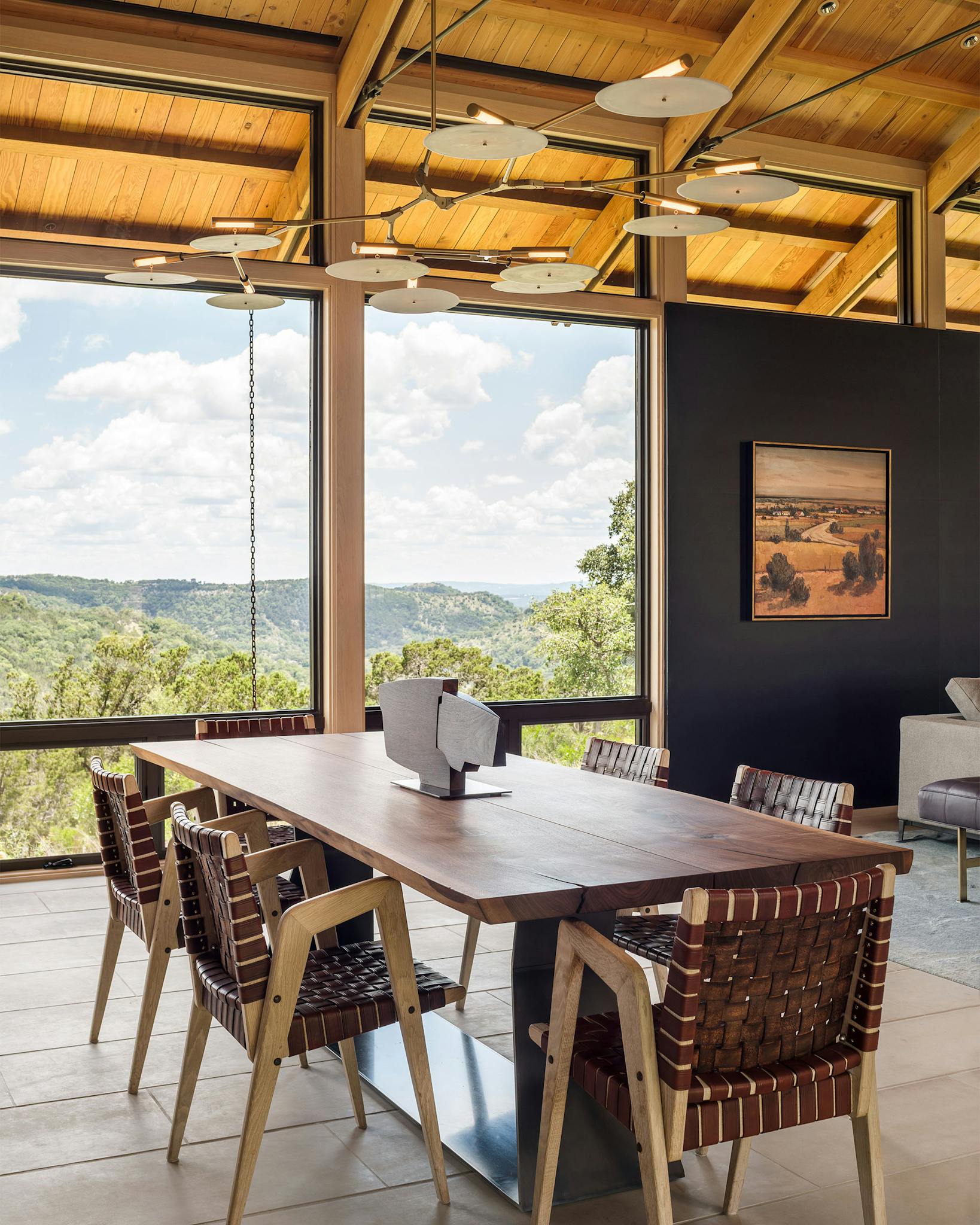
The exterior slatted cedar panels lining Boerne's Sycamore Springs Ranch have a utilitarian purpose: to halt whipping winds and harsh sunlight. But inside, the panels provide an aura of mystery: above the dining area, the material creates a hideaway bedroom intended for grandchildren, which they reach by climbing a ladder.
Andrew Pogue
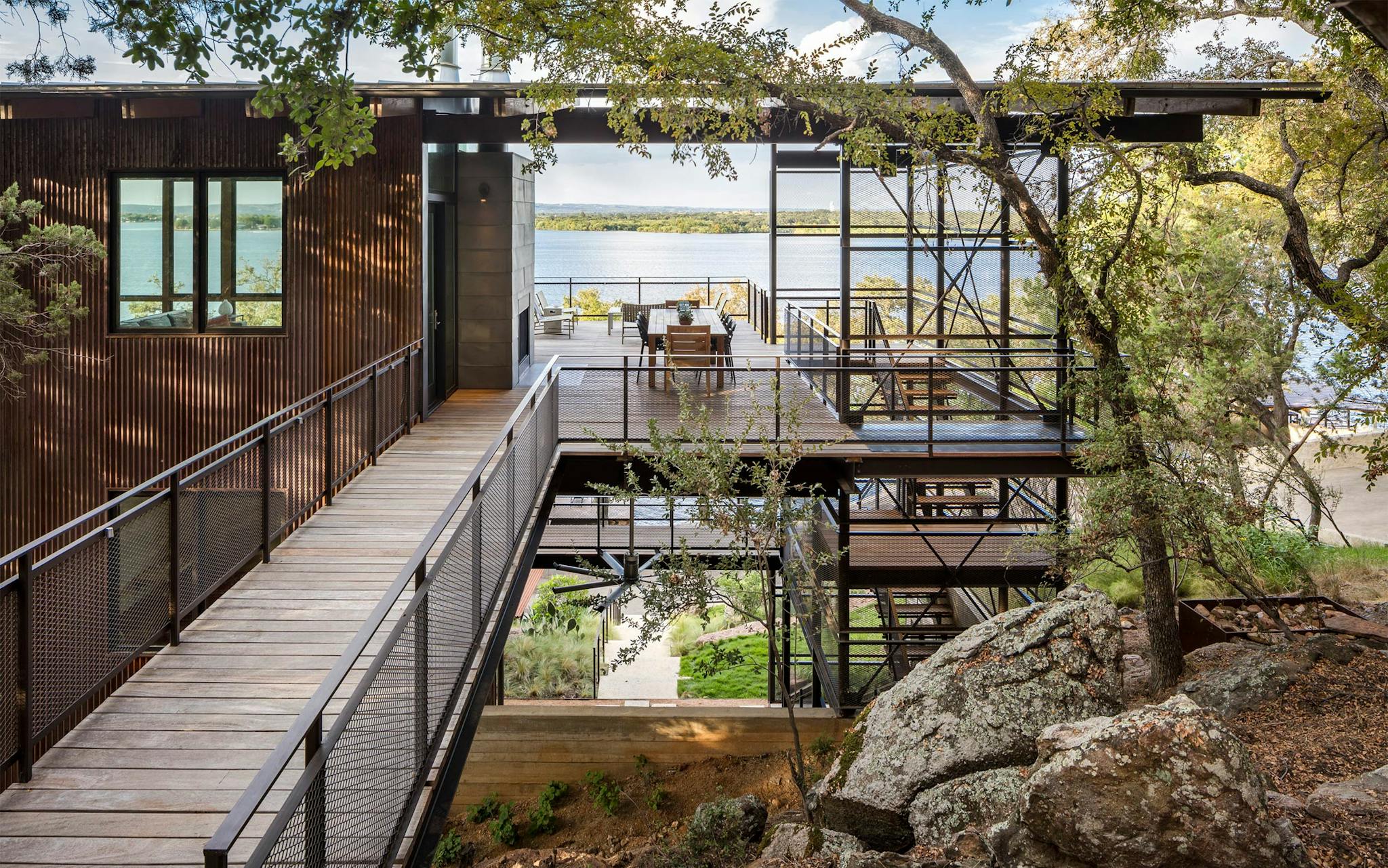
Inspired by the high-rise buildings the homeowner's father (an architect) once built, the vertically structured Blue Lake Retreat in Marble Falls boasts a practically full 180-degree view of the water—not to mention, it's replete with a boathouse and swim deck forged from steel, wood, and mesh.
Andrew Pogue
Clarification : This story has been updated to include information about author Helen Thompson.
This article originally appeared in the October 2021 issue of Texas Monthly with the headline "A Sense of Place." Subscribe today.
Get our weekly newsletter.
Source: https://www.texasmonthly.com/style/texas-homes-lake-flato-architecture/








Tidak ada komentar:
Posting Komentar